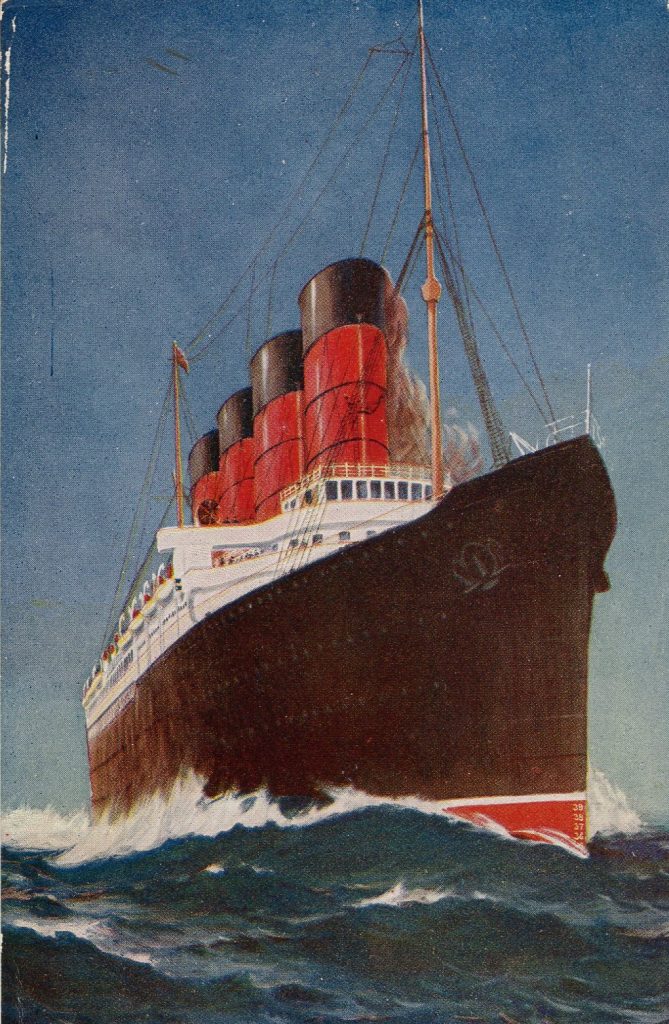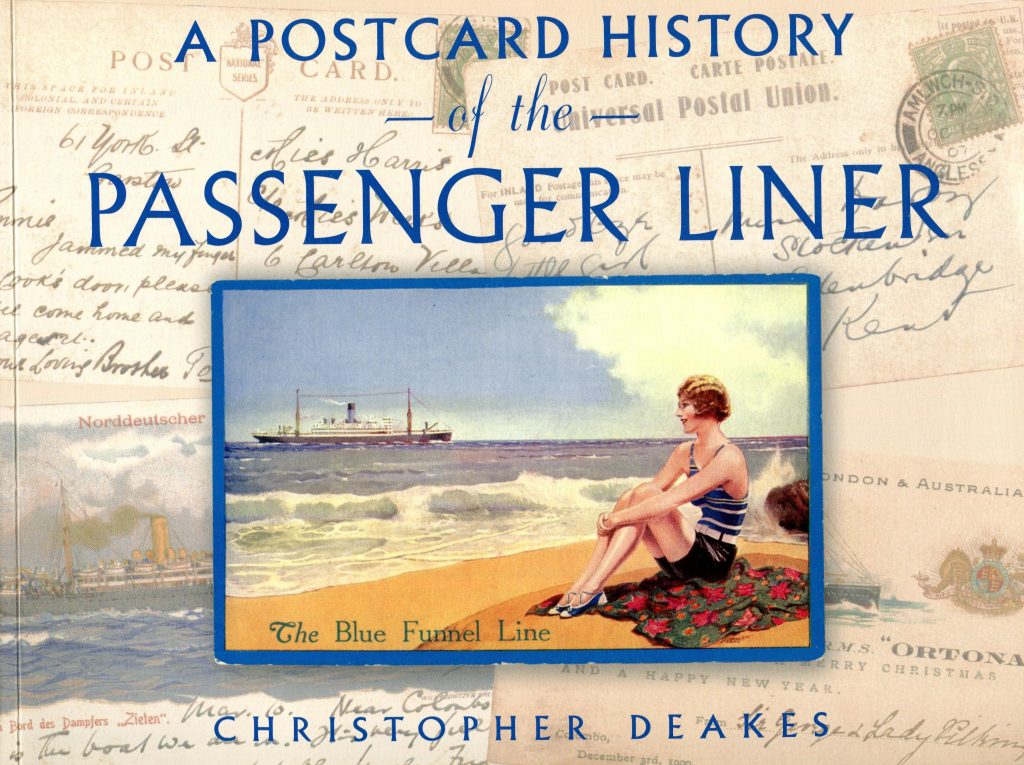ATTENTION: Art enthusiasts, Art lovers, Art historians. PLEASE IDENTIFY the following: Dixon, Reid, Schipperus, Edler, Cassiers, Feiertag, Kircher, Bohrdt, Rooke, and Rosenvinge. And, others!
Reach over your shoulder and pat yourself on the back if you know one or more of these names. If you are an art lover and none of these names are familiar, here’s your assignment. Don’t worry there is no test at the end of this article, but you will be a lot wiser if you accept my challenge.
There are only three steps:
1. Go to the next postcard show. (Since this is a very difficult time – March/April/May 2020 – and the coronavirus has most of us under wraps, this step may be some weeks or months from now, so make a note on your September/October/November calendars to get to a postcard show.)
2. Find the one or two dealers in the room with an ample inventory of passenger/ocean linerpostcards. Sit down and start looking for cards like this one.

3. Buy three (Remember one is a souvenir, two is a set, and three is a collection.) of the cards that you like the best but be sure one the names you see above is on the card. For you see, all the names above are artists who were very accomplished but were seldom credited for their art. You bought three, right? Good, you now have a new collection of artist-signed ship postcards. Congratulations.
The foremost authority on this topic is Christopher Deakes. His book, A Postcard History of the Passenger Liner is a (9½“ x 11”) compendium of images and data that comes highly recommended by dozens of reviewers. Marine News Magazine called it a “magnificent volume,” “Attractively illustrated, well researched and well written, it is an important contribution to work on marine artists,” said the Journal for Maritime Research. “An evocative story of elegant ships and leisure travel … sumptuous,” said the Western Morning News.
“From around 1880 for almost one hundred years, shipowners commissioned a wealth of paintings that depicted, as well as their magnificent liners, the routes they travelled, their exotic destinations, and life on board. These paintings, rich in imagination and atmosphere, appeared on posters and postcards to advertise the companies and their ships; and so was born a whole genre that produced tens of thousands of images that form a wonderful record of the great era of the passenger liner. They tell the story of the vanished world of elegant ships, leisurely travel, and of the political and social times much changed by the history of the past century.”
Deakes’s book includes more than 500 images of the liners in which so many of our ancestors sailed as emigrants, soldiers and diplomates, or simply as tourists – to and from foreign lands. The glossary includes thumbnail biographies of more than 170 artists and illustrators. Their inclusion in this volume may be the first time that some have ever been credited.


I am a relatively new postcard collector, and my primary collection is ocean liners with a focus on art cards. This article was great! I immediately bought the book, I’m very excited to read it.
(My favorite maritime artist currently is Kenneth D. Shoesmith; his art is what really drew me in.)